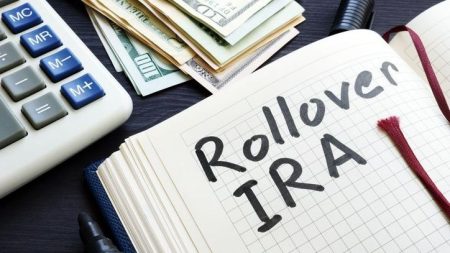A solo 401(k) plan is a powerful retirement savings tool designed specifically for self-employed individuals and business owners without employees. These plans allow for both employee and employer contributions, providing flexibility and the potential for substantial tax advantages. To fully benefit from this retirement savings vehicle, however, it’s important to be aware of solo 401(k) contribution deadlines, which vary for the employee and employer portions. Knowing these deadlines ensures you can maximize your contributions and take full advantage of tax benefits.
What Is a Solo 401(k) Plan?
A solo 401(k) or one-participant 401(k) is a retirement savings plan specifically designed for self-employed individuals and small business owners with no employees other than their spouse. It functions similarly to a traditional 401(k) plan, allowing for both employee and employer contributions. This dual contribution structure enables higher contribution limits compared to other retirement plans, making it an attractive option for maximizing retirement savings.
Contributions can be made on a pre-tax basis, reducing taxable income, or after-tax, which allows for tax-free withdrawals in retirement.
Solo 401(k) Plan Contribution Deadlines and Limits

Solo 401(k) plans offer significant flexibility in contribution amounts, making them highly advantageous for those looking to save aggressively for retirement. As of 2024, the contribution limits are as follows:
- Individuals under the age of 50: Employees can contribute up to $23,000, with an additional 25% of compensation as the employer, for a total of $69,000.
- Those aged 50 and above: Individuals who are 50 or older can contribute an extra $7,500 in catch-up contributions, bringing the total up to $76,500.
The potential for significant tax savings is another key benefit of solo 401(k) plans. Employee contributions reduce taxable income, while employer contributions are tax-deductible. But to maximize these benefits, you must meet the following solo 401(k) contribution deadlines:
- For employees: Employee contributions must be made by December 31.
- For employers: Employer contributions can be made until the business’s tax filing deadline, including extensions.
If you miss these deadlines, you will end up limiting your potential tax savings, as contributions cannot be applied to the previous tax year.
Solo 401(k) vs. SEP-IRA
Another popular retirement savings option for small business owners is the simplified employee pension (SEP)-IRA. When comparing a solo 401(k) to a SEP-IRA, there are several factors to consider.
Both plans allow for significant contributions, but the solo 401(k) generally offers higher contribution limits due to the ability to contribute as both an employee and employer, and make catch-up contributions. This can result in larger tax-deferred savings compared to a SEP-IRA, where contributions are solely employer-based.
Another advantage of solo 401(k) plans over SEP-IRAs is the ability to take out loans. SEP-IRAs do not offer loan provisions, whereas solo 401(k) participants may be able to borrow from their account balance. This feature provides added financial flexibility that can be beneficial in times of need.
That said, it is important to note that solo 401(k) plans have more administrative responsibilities compared to SEP-IRAs. For accounts with over $250,000, annual Form 5500 filing is required. SEP-IRAs are simpler to maintain with fewer administrative duties, which might appeal to those seeking a more straightforward plan.
Frequently Asked Questions

Here are some frequently asked questions regarding solo 401(k) plans and the contribution deadlines associated with them:
Can You Make Solo 401(k) Contributions After the Deadline?
Solo 401(k) contributions have specific deadlines for both the employee and employer portions. Employee contributions must be made by December 31, while employer contributions can be made up until the business’s tax filing deadline, including any extensions. If you miss these deadlines, contributions cannot be applied to the previous tax year.
Are There Any Penalties for Making a Late Solo 401(k) Contribution?
While there are no direct penalties for failing to meet the solo 401(k) contribution deadlines, the missed tax benefits can significantly impact your financial planning and retirement strategy. For employee contributions, missing the December 31 deadline means those contributions cannot be counted for that tax year, potentially reducing your retirement savings and tax advantages. Employer contributions also need to meet the tax filing deadline; if not met, they cannot be retroactively applied.
What Are Some Other Benefits of Solo 401(k) Plans?
Solo 401(k) plans offer several advantages beyond the high contribution limits and tax benefits. One notable feature is the loan provision, which allows participants to borrow against their retirement savings. This can provide a valuable source of funds in times of need without incurring early withdrawal penalties. The loan can be up to 50% of the account balance, with a maximum of $50,000. It must be repaid with interest, typically within five years.
Bottom Line
Meeting the solo 401(k) contribution deadlines is essential for maximizing your retirement savings and fully benefiting from the plan’s valuable tax advantages. By understanding and adhering to both employee and employer contribution deadlines, self-employed individuals can optimize their retirement strategy. Plus, taking advantage of features like the loan provision adds further financial flexibility, particularly in comparison to SEP-IRAs, another popular option for small business owners.
Retirement Planning Tips
- Starting to save for retirement early gives your money more time to grow through compound interest. Keep in mind that modest, consistent contributions to a retirement account like a 401(k) or IRA can add up significantly over the years. SmartAsset’s retirement calculator can help you determine how much you’ll need to save each month to generate enough income to cover your annual retirement expense.
- A financial advisor can help you plan and save for retirement. Finding a financial advisor doesn’t have to be hard. SmartAsset’s free tool matches you with up to three vetted financial advisors who serve your area, and you can have a free introductory call with your advisor matches to decide which one you feel is right for you. If you’re ready to find an advisor who can help you achieve your financial goals, get started now.
Photo credit: ©iStock.com/Luke Chan, ©iStock.com/tdub303, ©iStock.com/BrianAJackson
Read the full article here
















